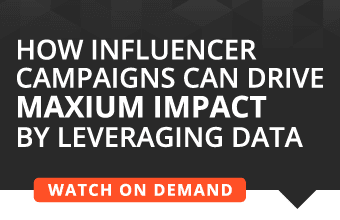In order to increase market presence and consumer engagement, as well as market depth, brand awareness and loyalty, many brands have shifted significant resources into finding and recruiting influencers. These representatives already have a developed, loyal following, usually on social media, and they are willing and able to leverage that following to benefit a brand or brands active in their market niche.
Active, effective influencers will move potential customers toward buy-in and act as trusted third-party affirmation for brands interested in connecting with consumers and making new fans. But, like any other marketing strategy, brands looking to leverage influencers need a well-developed plan of action including specific metrics and understood benchmarks to measure ROI.
There are several steps to developing a successful influencer marketing strategy. This article will address those.
1. Define the type of influencer marketing campaign
The first thing to do is to determine the sort of influencer marketing campaign that best fits the brand in question. While two campaigns related to consumer goods may appear similar, there are key differences in market, demographics, audience, and method. One brand may find that a series of video stories works best, while another gets more done by asking leading questions, or posting intriguing or attention-grabbing visuals. Each of these campaigns can engage consumers and start connections, but they all have optimal applications.
2. List definite goals for the influencer marketing campaign
Brand managers need to understand exactly what they hope to achieve by employing influencers in their marketing campaigns. This involves creating a list of definite goals one hopes to achieve, because it’s these goals that should drive the strategy, not the other way around. All too often, people set goals, then, later, they force the metrics to meet the plan, rather than shifting the plan to achieve the goals. Avoid that mistake by clearly defining and communicating the end goal as well as all the benchmarks along the way.
Goals for an influencer marketing campaign strategy may vary, but they generally involve a measurable increase in consumer knowledge of who the brand is and what it represents, as well as increased audience numbers and measurable upticks in engagement, new leads, and closed sales. Additional benefits may include an increase in customer loyalty and brand recommendations.
3. Define the audience for the influencer marketing campaign
Before determining which kind of influencer will work best, the brand should consider their ideal target market, tangential targets, and related markets for potential crossover sales.
4. Recruit the best influencers
Once the type of campaign is decided, the goals and benchmarks are determined, and the audience is defined, the next step is to match the right influencer with that campaign. The best influencers to target include those who share the brand’s audience, those with an already active following in the appropriate niche, and those who are adept as creating sustained engagement, especially those who show an ability to create fan engagement that goes on after they exit the initial conversation.
Influencers that have the ability to develop sustained buy-in for brands, build a foundation for a series of complementary marketing campaigns. This is a key element of and an important goal of successful influencer marketing strategy.








